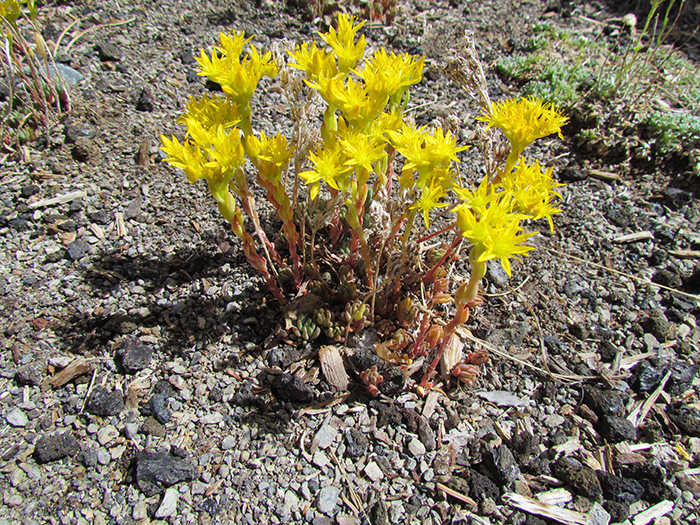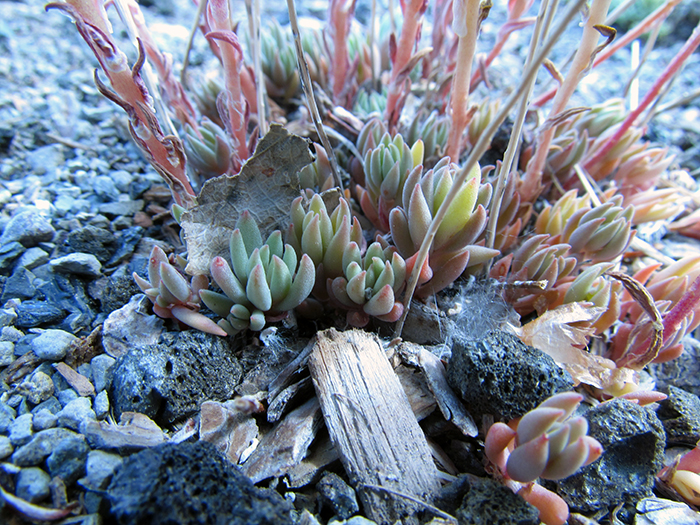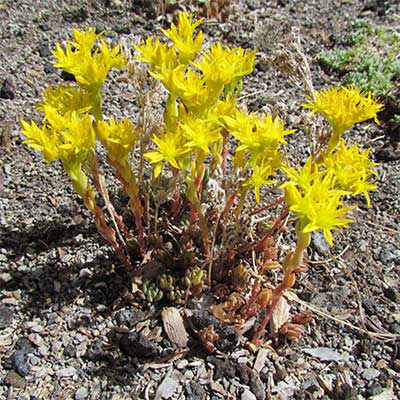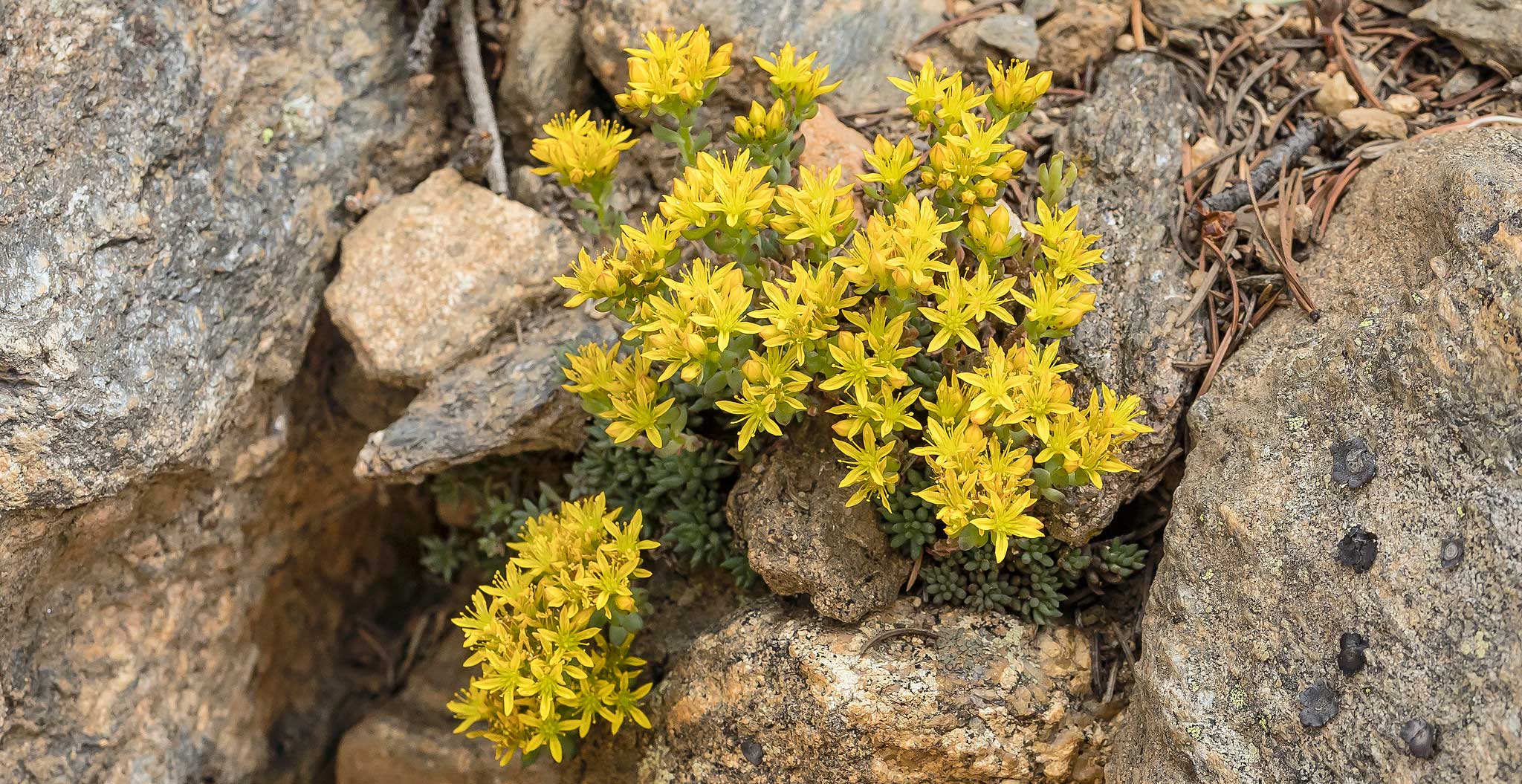Prairie Spotlight: Stonecrop Sedum
Stonecrop sedum (Sedum lanceolatum) is a drought-tolerant, sun-tolerant, wind-tolerant, abuse-tolerant plant that is common found on green roofs for those reasons. In addition to is toughness, it also has beautiful flowers, shown below.

Stonecrop sedum in bloom on the green roof, June 25, 2013
Note the round, spongy leaves of stonecrop (shown below)—an adaptation for survival in extremely dry environments. In the wild, you may find stonecrop growing in very thin soils on rocks, where the only moisture is from recent precipitation, quickly lost in the hot sun. Stonecrop is a succulent, a plant that holds lots of water in reserve within its own tissues—like a cactus, another succulent. Stonecrop has another adaptation that further enhances its ability to succeed where normal plants would shrivel, which involves its ability to retain its precious water reserve.

The leaves of the Stonecrop sedum
CAM Photosynthesis
All plants must open their stomata (small pores on the leaf surface) to allow CO2 to enter, in order for photosynthesis to occur. But, open stomata also allow water vapor to escape. Some plants have evolved a more efficient method to fix the CO2 (called C4 photosynthesis) that doesn’t require keeping stomata open all the time (see grasses blog), thus reducing water loss. Stonecrop, and its relatives in the sedum family, Crassulaceae, have taken C4 photosynthesis one step further—not only are they efficient so that stomata are not open much, but the stomata are open only at night.
Most plants are just the opposite! Since photosynthesis can occur only when the sun is up, that’s when they take in CO2 to make sugars. At night, when sugar can’t be made, they shut their stomata to conserve water, even though the lower temperature and higher humidity of night mean less water would be lost then. But these clever succulents have evolved a method to store nighttime-collected CO2 until it can be used the following day. The CO2 is incorporated into organic acid molecules and stored in vacuoles during the night, then converted into a usable molecule for photosynthesis during the day.
This process is called Crassulacean Acid Metabolism, or CAM, named for the sedum family. But it’s not restricted to one family—a variety of very drought tolerant plants use it, including yuccas, agaves, cacti, some orchids, even some unusually drought tolerant ferns. We have several CAM plants on the Berry Prairie, and you may have them where you live, too.
Written by Dorothy Tuthill, Biodiversity Institute
Share This Post

We hear a lot about staying properly hydrated, right? Well, plants have to do the same. As a plant, maintaining this balance can be a bit trickier than just drinking more water. All plants must open their stomata (small pores on the leaf surface) to allow CO2 to enter, in order for photosynthesis to occur. But, open stomata also allow water vapor to escape, up to 1000 water molecules exit the stomata for every CO2 molecule fixed into sugars!
Social Media
Latest News



Archives
- All
- October 2025
- August 2025
- July 2025
- June 2025
- May 2025
- April 2025
- March 2025
- February 2025
- January 2025
- November 2024
- October 2024
- September 2024
- August 2024
- July 2024
- June 2024
- May 2024
- April 2024
- March 2024
- February 2024
- January 2024
- December 2023
- November 2023
- August 2023
- July 2023
- April 2023
- September 2022
- August 2022
- July 2022
- June 2022
- May 2022
- April 2022
- March 2022
- February 2022
- January 2022
- December 2021
- November 2021
- October 2021
- September 2021
- August 2021
- May 2021
- April 2021
- March 2021
- October 2020
- August 2020
- July 2020
- January 2020
- March 2019


